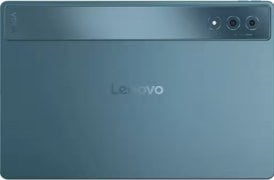- Home
- Science
- Science News
- MIT Researchers Measure Quantum Geometry of Electrons in Solid Materials for First Time
MIT Researchers Measure Quantum Geometry of Electrons in Solid Materials for First Time
MIT physicists achieved a significant breakthrough by measuring the quantum geometry of electrons in solids.

Photo Credit: Unsplash
Physicists measured the quantum geometry of electrons in solids.
A new study has allowed physicists from the Massachusetts Institute of Technology (MIT) and collaborators to measure the quantum geometry of electrons in solids. The research provides insights into the shape and behaviour of electrons within crystalline materials at a quantum level. Quantum geometry, which had previously been limited to theoretical predictions, has now been directly observed, enabling unprecedented avenues for manipulating quantum material properties, according to the study.
New Pathways for Quantum Material Research
The study was published in Nature Physics on November 25. As described by Riccardo Comin, Class of 1947 Career Development Associate Professor of Physics at MIT, the achievement is a major advancement in quantum material science. In an interview with MIT's Materials Research Laboratory, Comin highlighted that their team has developed a blueprint for obtaining completely new information about quantum systems. The methodology used can potentially be applied to a wide range of quantum materials beyond the one tested in this study.
Technical Innovations Enable Direct Measurement
The research employed angle-resolved photoemission spectroscopy (ARPES), a technique previously used by Comin and his colleagues to examine quantum properties. The team adapted ARPES to directly measure quantum geometry in a material known as kagome metal, which features a lattice structure with unique electronic properties. Mingu Kang, first author of the paper and a Kavli Postdoctoral Fellow at Cornell University, noted that this measurement became possible due to collaboration between experimentalists and theorists from multiple institutions, including South Korea during the pandemic.
These experiences underscore the collaborative and resourceful efforts involved in realising this scientific breakthrough. This advancement offers new possibilities in understanding the quantum behaviour of materials, paving the way for innovations in computing, electronics, and magnetic technologies, as reported in Nature Physics.
Get your daily dose of tech news, reviews, and insights, in under 80 characters on Gadgets 360 Turbo. Connect with fellow tech lovers on our Forum. Follow us on X, Facebook, WhatsApp, Threads and Google News for instant updates. Catch all the action on our YouTube channel.
- Samsung Galaxy Unpacked 2025
- ChatGPT
- Redmi Note 14 Pro+
- iPhone 16
- Apple Vision Pro
- Oneplus 12
- OnePlus Nord CE 3 Lite 5G
- iPhone 13
- Xiaomi 14 Pro
- Oppo Find N3
- Tecno Spark Go (2023)
- Realme V30
- Best Phones Under 25000
- Samsung Galaxy S24 Series
- Cryptocurrency
- iQoo 12
- Samsung Galaxy S24 Ultra
- Giottus
- Samsung Galaxy Z Flip 5
- Apple 'Scary Fast'
- Housefull 5
- GoPro Hero 12 Black Review
- Invincible Season 2
- JioGlass
- HD Ready TV
- Laptop Under 50000
- Smartwatch Under 10000
- Latest Mobile Phones
- Compare Phones
- Redmi Note 15 5G
- Redmi Note 15 Pro 5G
- Redmi Note 15 Pro+ 5G
- Lava Play Max
- Poco C85 5G
- Honor Magic 8 Lite
- Jolla Phone
- Realme P4x 5G
- Asus ProArt P16
- MacBook Pro 14-inch (M5, 2025)
- OnePlus Pad Go 2
- Poco Pad M1
- Just Corseca Skywatch Pro
- Honor Watch X5
- Acerpure Nitro Z Series 100-inch QLED TV
- Samsung 43 Inch LED Ultra HD (4K) Smart TV (UA43UE81AFULXL)
- Asus ROG Ally
- Nintendo Switch Lite
- Haier 1.6 Ton 5 Star Inverter Split AC (HSU19G-MZAID5BN-INV)
- Haier 1.6 Ton 5 Star Inverter Split AC (HSU19G-MZAIM5BN-INV)












